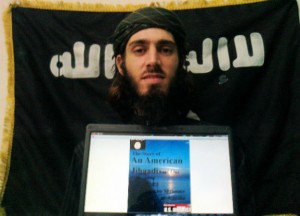This week, I had the opportunity to write up a short post on the possibility that the new generation of jihadi recruits, fighting primarily in Syria but also across a plethora of al Qaeda affiliates, might dethrone al Qaeda’s global leader, Ayman al-Zawahiri, in order to pave the way for a new targeting focus and direction. Since the al Qaeda fractures in Syria emerged last summer, the Islamic State of Iraq and al Sham (ISIS) has openly rebuked Zawahiri. Their targeting focus, mission and direction have been more focused on creating an Islamic state and fighting more for local and sectarian issues than global jihad. ISIS has been directly undermined, disavowed and attacked based on Zawahiri’s direction and jihadis are now in open conflict with each other in Syria.
Today, there is more incentive than any other time for jihadis to either kill al Qaeda’s global leader or assist in his capture/elimination at the hands of Western or Pakistani counterterrorism forces. Here is the introduction to the discussion I posted at FPRI and read the entire post at this link. I’ve also posted one of my favorite tweets reference this dilemma and its historical connections to modern jihad’s founder: Abdallah Azzam.
In November of 1989, a car passed through a street in Peshawar, Pakistan only to be demolished by a roadside bomb. Inside, the single most inspirational figure of the Afghanistan jihad, Abdallah Azzam, lay dead along with two of his sons. The most effective jihadi prostelytizer of his era, Azzam inspired thousands to come and fight in the name of Islam to defeat Soviet aggression in Afghanistan. Later, Azzam’s campaign and concepts would morph to become part of the foundation for the world’s most notorious terror group–al-Qaeda.
Jihadis prefer to pass blame for Azzam’s death to the Mossad; a convenient scapegoat that would seemingly make sense in one context. Azzam, a Palestinian by birth, toyed with the notion of carrying the jihad from Afghanistan to Palestine. But the evidence of Mossad responsibility is scant, and in reality its equally or more plausible that Azzam’s death came not from afar but from within jihadi ranks. At the time of his death, younger jihadis were interested in sustaining the Peshawar base as a training and staging ground for global jihad against other apostate regimes. Usama Bin Laden, Ayman al-Zawahiri and Abu Musab al-Suri were some of the foreign fighters wishing to continue the jihadi campaign elsewhere, but they were likely stifled by the older and wiser Azzam. While we can’t know for sure whether Bin Laden, Zawahiri, Suri or one of their contemporaries triggered Azzam’s assassination rather than the Mossad or Pakistani ISI, when comparing two theories the general rule of thumb is the simplest explanation is more likely the correct one. Who would have a stronger motive for Azzam’s murder, easier access to Azzam as a target and the ability to effectively employ an IED on a moving car? The Israeli Mossad based thousands of miles away and likely more focused on local terror concerns at their doorstep? Or the emerging generation of al-Qaeda, disagreeing with their leader over direction and targeting, jealous of Azzam’s fame, well trained in roadside bombs and with easy access to the target?
I point to the historical example of Azzam because the past decade’s narratives of a unified al-Qaeda bound tightly by an all powerful ideology have blinded us to a truth that is only now revealing itself. Today, the greatest threat to al-Qaeda is al-Qaeda. One year ago, I had several Twitter arguments with counterterrorism (CT) aficionados over the possibility of al-Qaeda killing off its own members. Some thought this preposterous, arguing the ideological underpinnings of al Qaeda were so strong as any such internal violent purge would be deemed unethical by global jihadi cadres. But my past research on al-Qaeda’s internal documents convinced me long ago that the terror group was just like any organization-–full of petty, bickering and competing individuals constantly undercutting each other. When things go poorly, jihadis behave badly, and ideology doesn’t pave over the differences and jealousy between al-Qaeda members.




